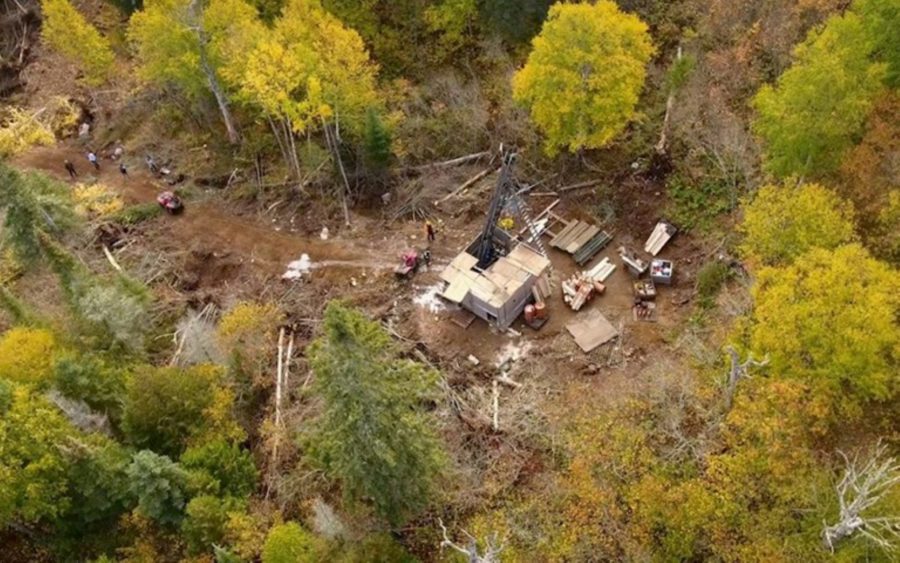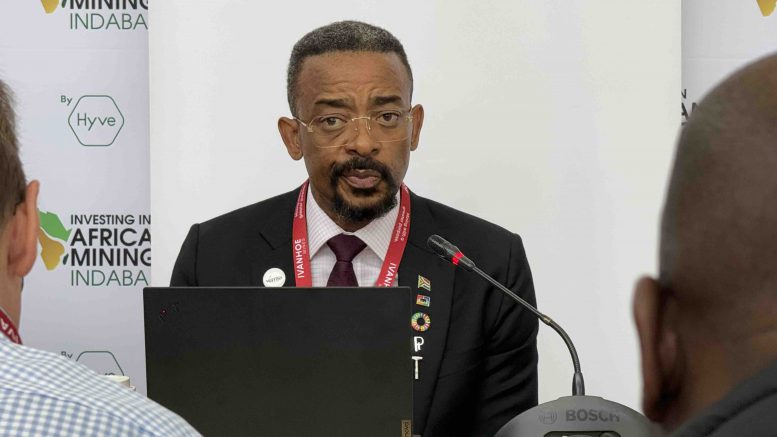Tulawaka – Tanzania’s newest gold mine
The first of Barrick’s new developments to go commercial in 2005 was the Tulawaka open pit mine, which poured gold on March 15 of this year.
The property in western Tanzania was acquired by Pangea Goldfields Inc. of Toronto and Montreal-based MDN Northern Mining in 1997, the year before the East and West mineralized zones were discovered. It is now owned 70% and operated by Pangea (a wholly-owned subsidiary of Barrick since 2000) and 30% by MDN.
With permits in hand, the partners made the go-ahead decision at year-end 2003, and construction commenced in early 2004. Commercial production was achieved in March 2005 at a total construction cost most recently estimated at US$55 million, up from the original US$49.2 million budget. Current reserves give the mine a four-year life, producing 100,000-107,000 oz of gold annually (100% basis) at a total cash cost of US$170-$180/oz.
Although small for Barrick, Tulawaka is the main asset of its partner. “The startup of Tulawaka means that we will finally have revenues from production and not depend entirely on the equity markets,” says MDN’s CEO Carlos Bertoni.
The tropical site is 1,000 km from the capital Dar es Salaam, 120 km west of Barrick’s Bulyanhulu underground mine, and 100 km east of the Rwandan border. Modern mining has only come recently to Tanzania, but the government is pro-mining, with government officials rapidly building up an understanding of the industry, according to David Tucker, general manager of business development and public affairs for Barrick Gold of Australia, which oversees Barrick’s African operations.
Geology
The Archean-age Lake Victoria gold belt is similar in geology to the gold fields of Western Australia, and to the Timmins, Ont., camp, but is relatively under-explored, making it attractive for both Barrick and MDN. Says Bertoni: “Tulawaka was a true new discovery. No mineralization was known to exist on the site until we carried out geochemical surveys and defined targets for drilling. The orebody does not outcrop and was thus hidden from local prospectors.”
Gold occurs principally as free gold within quartz veins or stockworks, often associated with felsic intrusives. The mineralization is contained in both saprolite and hard rock overlain by discontinuous laterite that also contains detrital or chemically remobilized gold. At least five gold-bearing quartz vein systems occur within the Tulawaka area, with the East Zone the most significant. This zone contains a gold-bearing quartz vein 60 cm to 4 m thick that strikes northwest for about 1 km and dips at 40 to 65 to the northeast.
Proven and probable reserves at Tulawaka (100% basis) come to 1.394 million tonnes grading 12.2 g/tonne Au, containing 546,000 oz of gold, as of the end of 2004. As well, the mine’s indicated resources are 757,000 tonnes grading 2.3 g/tonne Au, containing 57,000 oz of gold. These reserves and resources are all in the East Zone pit.
Pangea continues to explore the East and West zones, and is also studying underground mining of the non-open-pittable East Zone resources. MDN is exploring on ground adjacent to the Tulawaka property.
Mining and processing
The East Zone pit was designed by Met-Chem Canada of Montreal, with ramp and bench designs based on geotechnical investigations by Golder Associates. The well-weathered ore and waste are mined and transported using Komatsu excavators, loaders, dozers and haul trucks. Benches are 5.0 m tall. The ultimate pit will cover 30 ha, and reach 135 m below surface, with a 42* wall slope.
The mine operates on 12-hour shifts around the clock. On average, 21,000 tonnes of material will be excavated each day, with a waste:ore strip ratio of 18.3:1. The ore is hauled 1,200 m to the plant.
Ausenco Ltd. of Australia was the EPCM consultant for the 1,000-tonne/day plant. The system is described as simple and reliable, yielding optimum gold recovery using current and proven technology.
Run-of-mine ore is stockpiled and fed to a primary jaw crusher from Metso. The crushed ore is ground in a single-stage SAG mill from FFE, with liners supplied by Metso. Free gold (50-70% of the output) is recovered using Knelson concentrators, a Gekko intensive leach reactor and electrowinning.
The rest of the gold is recovered by conventional carbon-in-leach technology. Cyclone overflow (at 110 microns) passes to a seven-stage leach plant. Reagent consumption is moderate at 0.60-1.0 kg/t NaCN. Conventional caustic solution stripping of carbon is followed by electrowinning. Cyanide is destroyed with SO2 and air.
A thickener recycles water to the plant before tails are discharged to storage.
Lightnin supplied the agitators, Warman the pumps and ITT Goulds the process pumps. GSI Luchini supplies the grinding media, and Orica the cyanide.
The first feed to the SAG mill was on February 25 this year, and the plant moved to 24 hours/day operation March 5. During March the plant was above budget for availability (82%), throughput (31,592 tonnes), gold recovery rate (97.2%) and gold produced (6,505 oz). Throughput has exceeded 1,500 tonnes/day on occasion.
Environmental management
Tulawaka is located in a forest reserve, so great care has been taken to preserve the environment. A series of channels collect all site runoff into a dam where 350,000 m3 water has been collected, for use throughout the year. Because the mine is in a very dry region, water is collected only during the rainy season (March through April). This will be supplemented by a licensed well in the river.
The water storage and tailings facilities were designed by Knight Piesold Consulting of Perth, Australia. Tailings storage is close to the pit, just uphill from the water storage dam; its location does not result in the obstruction of any watercourse. It is designed to support maximum extraction of water from tailings, for recycling to the process plant. At closure, the tailings will be reclaimed using rock sheeting and planting.
Focus on training
The general manager lives in Dar es Salaam but all other employees live at site. Pangea personnel number 195 (including 35 expatriates from Australia, Canada, South Africa and Nepal) and handle plant operation, maintenance and security.
Tulawaka is being mined under contract by Caspian Mining Co. of Tanzania, which has 140 employees at the site. The other ongoing contractors are Sodexho, which has 40 employees to do the catering, and SGS which handles the analytical services with 10 employees.
“Tulawaka is a smaller mine and reserve than Bulyanhulu,” says Tulawaka general manager, Dave Anthony, “but it’s a valued addition for our operations in Tanzania. It will allow us to continue our efforts in building skills among our workforce of Tanzanians.”
“We are training a lot of people in new skills, teaching Tanzanians to do the job efficiently and safely,” says Tony Orr, the safety & training general foreman. The efforts are paying off, as the mine has completed 2.8 million man-hours worked without a single lost-time accident, to the end of April.
Anthony adds, “Over 95% of all contractors have been Tanzanian. It’s the first time a project of this magnitude and skill requirement has been executed principally with Tanzanian contractors. The project has been executed to a very high standard, as evidenced by the very rapid startup and achievement of steady-state operation.”
The Tanzanian construction contractors included Caspian for earthworks and site infrastructure, Beta Bidding for concrete placements, Orion for concrete placements and minor
works, and Enikon for tanks, structural steel, mechanical and piping installations. Southern Cross of Australia did electrical work and instrumentation, and African Construction Services of Australia built the houses and offices.





Comments